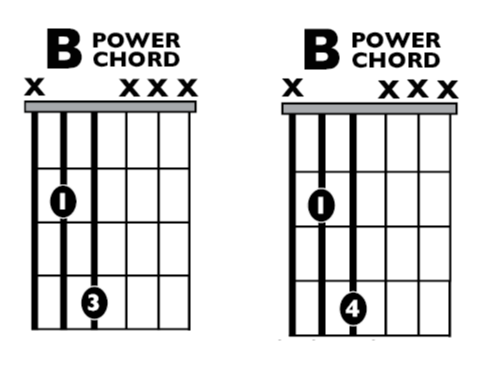LESSON PLAN: Using the B Power Chord
Objective
Students will be able to play the B power chord in songs by finding the root note of the chord and building a power chord from it.
Resources
Guitars, picks
Procedures
- Press down the note B
 with the index finger (5th string, 2nd fret). Place the finger so that while it is holding down the B note it is also touching against the 6th string to mute it. The rest of the hand should be muting all the other strings by lightly touching them.
with the index finger (5th string, 2nd fret). Place the finger so that while it is holding down the B note it is also touching against the 6th string to mute it. The rest of the hand should be muting all the other strings by lightly touching them.
- Strum the entire guitar to check that only the B string makes noise even when you strum across all six strings. Adjust the hand as necessary to accomplish this only applying pressure to the note B.
- Add the note on the 4th string, 4th fret using either the pinky or ring finger depending on the size of the hand (this is the 5th of the chord, in this case the note F#). Again trying to position the hand so that all other strings
 are muted. “Power Chords” can be used for major OR minor chords.
are muted. “Power Chords” can be used for major OR minor chords.
- Some guitar players also add the note on the 3rd string, 4th fret. This note isn’t necessary since it’s just another root note (B), but can be added for a slightly fuller sound.
- This chord can be used anytime B or B minor is called for in a progression. If playing the “power chord” is too difficult at first, simply use the B “root note”; this will sound fine and get us used to placing the hand for eventually using the chord.

National Core Arts Standards (Music)
Anchor Standard 5: Develop and refine artistic techniques and work for presentation. Example: General Music MU:Pr5.1.5 b. Rehearse to refine technical accuracy and expressive qualities, to address challenges, and show improvement over time. Common Core Correlation: CCSS.ELA-Literacy.RST.6-8.3 Follow precisely a multistep procedure when carrying out experiments, taking measurements, or performing technical tasks.

